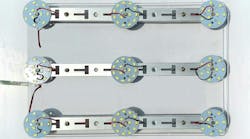The advanced driver-assistance system (ADAS) market is expected to reach $60B globally by 2020, according to Allied Market Research, representing a CAGR of 22.8% from the years 2014 to 2020. Clearly, this represents a significant opportunity for semiconductor content.
Commonly found in many of today’s new automobiles, an ADAS usually facilitates safe driving and can alert the driver if the system detects risks from surrounding objects such as errant pedestrians, cyclists, or even other vehicles on an unsafe trajectory. Furthermore, these systems typically provide dynamic features such as adaptive cruise control, blind-spot detection, lane-departure warning, driver-drowsiness monitoring, automatic braking, traction control, and night vision.
Consumer demands for more safety and comfort while driving, along with the continued increase of government safety regulations have been the main growth drivers of ADAS in automobiles for the latter half of this decade. However, such growth also exacerbates and/or creates new challenges for the industry, ranging from pricing pressure and inflation to design complexity and difficulty in testing these systems.
On top of that, it should come as no surprise that the European automotive industry—which represents one of the most innovative automotive market—has seen major market penetration and adoption of ADAS from its customers. But both American and Japanese automakers are not far behind that curve. What many manufacturers see as the ultimate goal, though, is an autonomous driving machine without the need for a human being behind the wheel.
System Challenges
Generally speaking, an ADAS system incorporates some kind of microprocessor to gather all of the input from the numerous sensors within the vehicle, and then process that data so that can be presented to the driver in an easy-to-understand manner. These systems are usually powered directly from the vehicle’s main battery, which is a nominal 9 to 18 V. However, it could run as high as 42 V due to voltage transients within the system, and as low as 3.5 V during a cold-crank condition. As a result, any dc-dc converters within these systems must be able to handle the wide input voltage range of 3.5 to 42 V, at a minimum.








